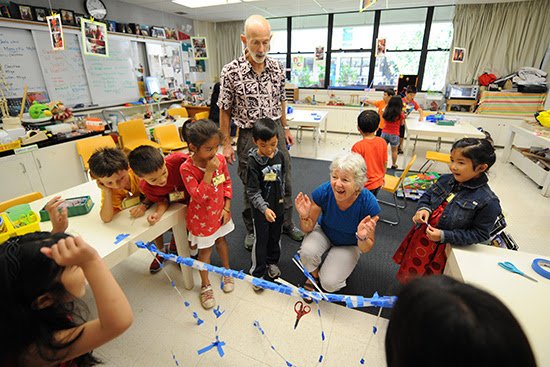What Are 5 Benefits of Project-Based Learning?
As educational landscapes evolve, more K-12 schools are turning to project-based learning (PBL) to enhance the learning experience and prepare students for a complex, interconnected world. Unlike traditional educational models, PBL immerses students in real-world challenges, creating a dynamic classroom environment that promotes engagement, critical thinking, and practical skills.
This shift revitalizes the educational journey and aligns with the needs of today's students and tomorrow's professionals. In this article, we’ll explore five key benefits of implementing PBL in K-12 schools, compare it to traditional educational approaches, and show how this innovative approach can impact your students.
5 Benefits of Project-Based Learning
Project-based learning (PBL) is changing how students engage with their education. By focusing on real-world problems through active, hands-on projects, PBL is a unique and necessary pivot from traditional teaching that relies heavily on memorization.
Here are 5 ways project-based curriculum benefits elementary, middle school and high school students:
1. Enhances Engagement and Encourages Active Learning
PBL transforms students from passive recipients of information to active participants in their education, which motivates and encourages deep learning. Engagement through PBL is shown to significantly increase student interest and academic achievement.
For example, research indicates that when students are actively involved in learning through real-world projects, their intrinsic motivation increases, leading to higher engagement and better retention of knowledge. This active participation ensures that learning is more enjoyable and more effective, promoting sustained academic performance.
2. Builds Critical Thinking and Problem-Solving Skills
With PBL, students tackle real-world problems that require thoughtful examination of various issues. This method encourages them to think critically, come up with creative solutions, and develop strategic problem-solving skills that are crucial both in academic settings and in the workplace.
By applying their knowledge to solve practical challenges, students learn how to conduct research, collaborate with peers, and utilize technology to gather and analyze data. For example, our Idea2Venture module teaches students how to launch a new business from an initial idea. This includes everything from ideation and market analysis to business planning and execution.
3. Promotes Collaboration and Communication
Project-based learning cultivates communication and teamwork skills by requiring students to collaborate closely on diverse projects. This process mirrors the collaborative nature of modern workplaces, where employees must communicate effectively, negotiate differences, and synthesize their viewpoints to achieve common goals.
Through these interactive projects, students not only learn to express their ideas clearly, but also develop critical interpersonal skills, such as empathy and adaptability. This emphasis on cooperative learning prepares students for professional environments where teamwork and communication are key to success.
At the Iolani School in Hawaii, teachers experience the excitement project-based learning brings their students (and themselves) during our professional development workshop.
4. Supports Personalized and Inclusive Education
PBL's adaptability allows teachers to tailor projects to the diverse needs, interests, and strengths of their students, making learning more personalized and inclusive. This approach acknowledges and values the unique backgrounds and perspectives of all students, promoting more equality in the classroom.
PBL also accommodates various learning styles and cultural backgrounds by allowing students to engage with content that resonates with their personal experiences and interests. This ensures all students don’t just have the knowledge, but also the opportunity to succeed with skills that are in-demand today.
5. Provides Real-World Relevance and Career Preparation
One of the standout advantages of PBL is its emphasis on real-world applicability. By engaging students in projects that simulate actual professional scenarios, PBL prepares them for future careers in a meaningful way.
This bridge between theoretical knowledge and practical application ensures students are learning academic content while also developing skills for professional success. These real-world projects allow students to experience firsthand the challenges and rewards of professional work. In turn, they graduate with valuable skills and insights that are directly applicable to their future careers.
Comparing PBL with Traditional Educational Models
Traditional educational models often focus on passive learning, where students are expected to absorb information from lectures or textbooks. This method leads to disengagement and a lack of connection between what students learn and how they actually apply it to their lives.
In contrast, project-based learning:
Integrates Multiple Disciplines: Unlike the siloed approach of traditional education, PBL often integrates several disciplines. A single project might encompass elements of math, science, language arts, and social studies, reflecting the interconnected nature of real-world issues.
Promotes Active Learning: PBL requires students to be active participants. They need to make decisions, solve problems, and present their findings, which cultivates a dynamic learning environment.
Fosters Soft Skills: Through PBL, students develop critical soft skills like communication, collaboration, and critical thinking. These skills are essential for success in the modern workforce and are often underemphasized in traditional educational settings.
Adapts to Modern Educational Needs: The PBL approach is well-suited for today’s educational needs, where understanding complex systems and utilizing technology are paramount. It prepares students for the kinds of tasks and jobs they will encounter in a rapidly changing and interconnected world.
A teacher works through a project-based learning lesson worksheet after completing an exciting project.
Implementing Project-Based Learning: A Strategic Advantage
For educational leaders, adopting PBL in the classroom is a strategic advantage. It aligns with today’s educational standards and addresses the needs of students growing up in a digitally interconnected world. However, successful implementation requires thoughtful integration and support. Partnering with experienced curriculum providers, like Entrepreneur Pathways, Inc. can ensure that PBL is effectively integrated into your school's current curriculum, enhancing both teaching and learning outcomes.
If you’re ready to transform your educational approach and prepare your students for the future with project-based learning. Contact us today to learn how our specialized PBL curricula can be integrated into your school or district to create a more engaging, relevant, and effective educational experience.


